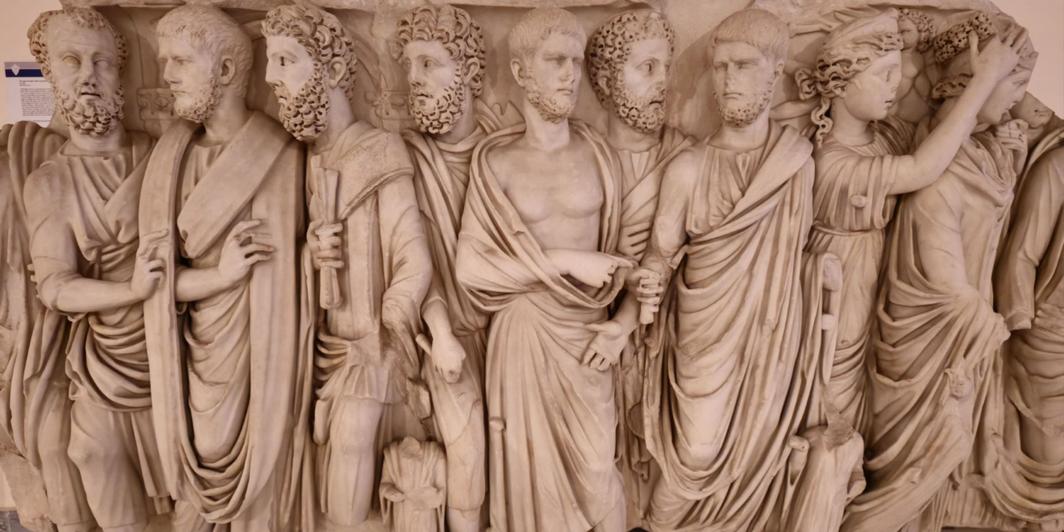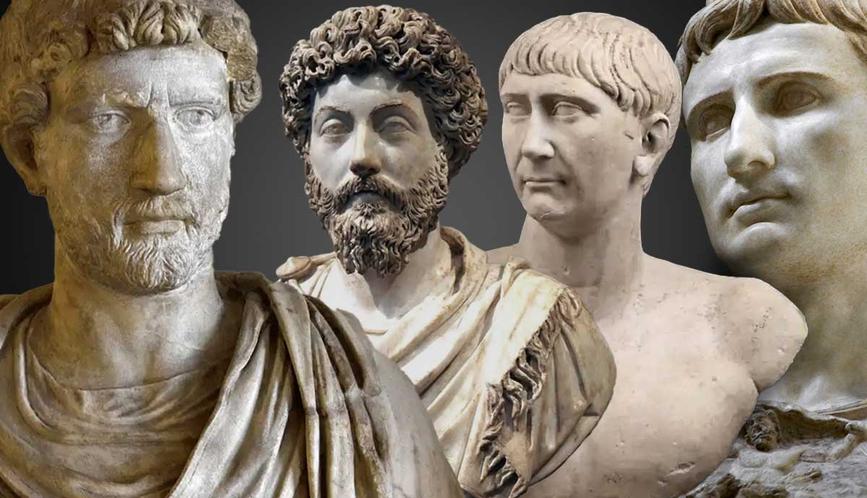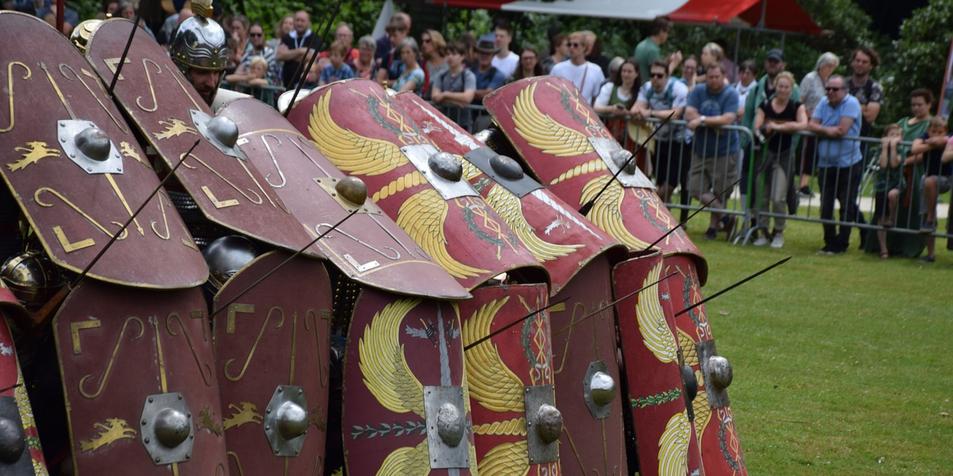Romans viewed Sporus, the boy castrated and taken as a wife by Emperor Nero, through a complex lens shaped by social norms, gender roles, and cultural perceptions of sexuality and power. Sporus belonged to a category known as “puer delicatus,” a term for young male slaves prized for their beauty and often groomed for the sexual favor of elite Roman men. This practice, while accepted among the upper class, was highly regulated by social hierarchy and the dominance-submission dynamics central to Roman attitudes on male-male relationships.

In Roman society, sexual relations with male slaves like Sporus were common and not generally stigmatized if the slave was clearly in a submissive role. Freeborn men engaging in similar relationships raised more social ire because they challenged established social equality. The concept of “puer delicatus” was well-known and not scandalous in itself. Even the emperor Augustus had a delicatus named Sarmentus.
What made Nero’s relationship with Sporus notable was the extreme step of castration and the public claim of Sporus as a wife. Nero’s treatment of Sporus defied Roman gender roles and social expectations surrounding marriage. For Romans, marriage was usually a social and legal institution with the purpose of procreation and family alliance. Nero’s act of marrying Sporus, a castrated boy and slave, appeared to overturn these norms and served as a display of lust rather than duty or politics.

Unfortunately, no contemporary Roman accounts explicitly record public reaction to the incident. However, later historians like Suetonius and Cassius Dio describe the event with emphasis on its unusual and shocking aspects. Suetonius highlights the castration and the bridal trappings Nero imposed on Sporus. He portrays the episode as scandalous because it breaks conventions of gender and marriage.
Cassius Dio offers a somewhat different perspective. He relates that Nero chose Sporus because he resembled Nero’s deceased wife, Poppaea Sabina, whom Nero reportedly had murdered. Nero’s renaming of Sporus as “Sabina” and the symbolic marriage indicate a personal and psychological motive intertwined with the political and erotic spectacle. Dio also reports that in Greece, where the marriage ceremony purportedly took place, the event was celebrated more openly with prayers for Sporus to bear children. This reflects a cultural difference: the Greeks appeared less constrained by Roman ideas of gender norms and marriage purposes.

Notably, Sporus remained prominent after Nero’s death. He became a figure associated with successive short-lived emperors Galba, Otho, and Vitellius during a turbulent civil war period. Sporus seemingly transformed from Nero’s “bride” to a kind of imperial mascot, symbolically lending legitimacy to these rulers through connection to Nero’s legacy.
Roman poets Juvenal and Martial later criticized such unions harshly in their satires. They saw homosexual marriages as betrayals of Roman values, especially because they could not produce children and were motivated by lust alone. These poets connected such marriages with Greek cultural influences, ridiculing them as signs of moral and political decay. Nero’s marriage to Sporus was thus framed as a symbol of abandoning Roman tradition in favor of Greek excess and licentiousness.

In summary:
- Sporus was a “puer delicatus,” a category of young male slaves prized for their beauty and sexual subservience in Roman elite circles.
- Relationships with such boys were common but subject to strict social roles emphasizing dominance and submission.
- Nero’s castration of Sporus and then marrying him as a wife was unprecedented and scandalized Roman norms around gender and marriage.
- Later historians Suetonius and Dio record the event with different focuses — castration and bridal treatment (Suetonius) and personal resemblance to Nero’s late wife and a more accepting Greek view (Dio).
- Poets Juvenal and Martial criticized homosexual marriage as unnatural and linked it with Greek cultural decadence.
- After Nero’s death, Sporus remained a notable figure tied to the imperial succession turmoil, symbolizing continuity with Nero’s reign.
Thus, Romans largely viewed Sporus’s role as Nero’s wife through the prism of social hierarchy, gender expectations, and cultural anxieties about morality and political stability. While the institution of “puer delicatus” was accepted, Nero’s marriage to Sporus remained a bizarre and controversial exception that lingered in Roman cultural memory as a sign of imperial excess and subversion of tradition.

How Did Romans View Sporus, the Boy That Nero Castrated and Took as a Wife?
Romans were fascinated, shocked, and deeply divided in their views about Sporus — the boy Emperor Nero castrated and married. The incident stood out because it shook Roman ideas of gender, dominance, and marriage. But to understand these reactions, you need a roadmap to Roman social norms and why this story still sparks debate today.

So, who exactly was Sporus? And how did Romans see this cheeky emperor’s bold move? Let’s unpack that famous scandal step by step.
“Puer Delicatus”: Rome’s Delicate Boys and Their Role

Sporus belonged to a category the Romans called puer delicatus, literally “delicate boys.” These youths were prized for their youthful, almost effeminate looks and often groomed as sexual favorites of wealthier men. They were generally slaves, not freeborn men, a key detail since slaves in Rome were viewed very differently.
Imagine a delicate young boy, carefully accessorized and doted upon, serving as a master’s companion — this was the archetype of a puer delicatus. Elite Romans like Emperor Augustus also had such boys, like Sarmentus. So having a puer delicatus was quite the norm among the rich, not scandalous in itself. The real Roman cultural concern was always about social hierarchy: who held power and who was submissive.
In Roman eyes, sleeping with a male slave wasn’t scandalous — slaves were submissive and socially beneath their masters. But sleeping with freeborn men? Social suicide. That crossed boundaries of status and honor.
Affection toward these boys varied too. Some, like the novel character Trimalchio, showed overt tenderness that society scoffed at. Yet, having a puer delicatus was not automatically vulgar. So far, so typical.
The Nero-Sporus Affair: A Case for Outrage or Art?
Now, enter Nero: Rome’s rebellious emperor with a penchant for drama. He castrated Sporus and then married him — not simply took him as a lover but staged a full-on wedding. This act was both shocking and confusing to Romans.
Why? Because Nero flipped Roman gender and marriage rules upside down. Marriage traditionally served family alliances and producing heirs. Now here was Nero marrying a castrated boy, breaking those expectations spectacularly. From Suetonius’ surviving account, the castration itself stands out as remarkable — it was rare enough to be highlighted.
Then, there’s the bridal veil and ceremonial wedding. Nero wasn’t just possessing Sporus; he was treating him as a wife. This bold subversion ignited gossip and disdain.
Two Ancient Narratives: Suetonius vs. Cassius Dio
Suetonius focuses on shock value: the castration, the bridal veil, and an erotic spectacle. His tone suggests moral outrage. But Cassius Dio, writing later, offers a different twist. He proposes that Nero’s choice was fueled by grief: Sporus resembled Nero’s murdered wife, Poppaea Sabina. Nero even called Sporus “Sabina.”
Dio’s account adds complexity. He describes a ménage where Pythagoras, another male companion, acted as Nero’s “husband,” while Sporus was the “wife.” This Greek-inflected view sees the relationship less as scandal and more as a tragic mimicry of lost love.
This is crucial because Dio also notes the marriage happened in Greece, where locals celebrated the event and prayed that Sporus would bear children for Nero — a gesture mixing irony and cultural difference. Greeks had a more open attitude towards alternate sexuality, unlike Rome’s rigid constructs of status and gender.
The Cultural Clash: Roman Scorn vs. Greek Festivals
The Greek reaction reveals the cultural lens shaping perceptions. Romans valued traditional marriages for children and family legitimacy, while Greeks might have seen this as theatrical or symbolic, not outrageous.
Juvenal and Martial, Roman poets, penned scathing criticisms of the marriage: they mocked it as lust-driven and “un-Roman.” They linked it to Greek “barbarity” — a jab at Nero’s failure to be truly Roman by indulging in Greek intellectualism and cultural flamboyance. In their eyes, Nero had abandoned respected Roman virtues for decadent, foreign pleasures.
Sporus After Nero: From Wife to Imperial Mascot
Once Nero died, the once-married Sporus took a surprising career turn. He became a companion to emperors Galba, Otho, and Vitellius during Rome’s chaotic civil war. Scholars suggest Sporus shifted from “bride” to an imperial mascot, lending a strange sort of legitimacy to these new rulers through his link to Nero.
What Can We Learn—and What Remains a Mystery?
Unfortunately, no firsthand Roman accounts survive describing popular reactions. We rely on later historians whose agendas shaped their telling. Still, the story reveals a society wrestling with gender, power, desire, and tradition.
Would modern readers find Nero’s act shocking? Maybe. To Romans, it was both an intriguing curiosity and a scandalous break from norms. The case of Sporus highlights the fine line Rome walked with sexuality: acceptance of dominance and submission but condemnation of blurred gender roles and childless marriages.
In an era often painted as prudish, Romans had complex views on love and power. Sporus was a living contradiction—slave and spouse, boy and bride, subjugated and celebrated. His story forces us to ask: how do societies define identity and relationships? Can passion ever truly break social chains?
Final Thoughts
The tale of Sporus reflects more than Nero’s eccentricities. It shows Roman tension between order and chaos, tradition and transformation. Whether seen as victim, symbol, or scandal, Sporus reminds us that human relationships often defy neat categories.
Next time you hear about Sporus, remember: he was more than a historical footnote. He embodied the tangled web of Roman views on love, status, and power—an enduring lesson on how culture shapes what’s scandalous… or acceptable.




